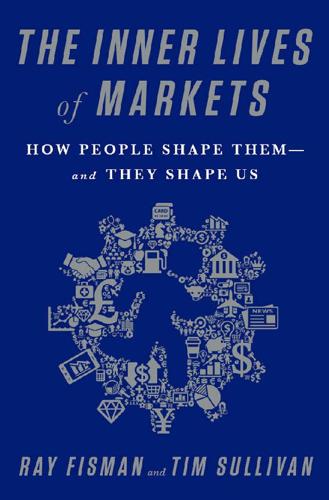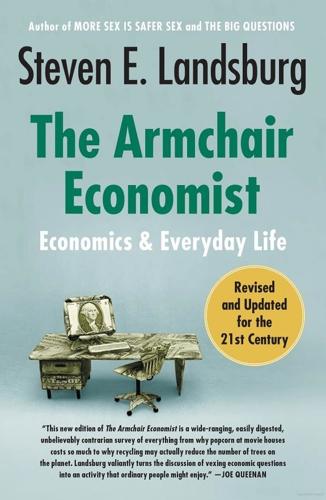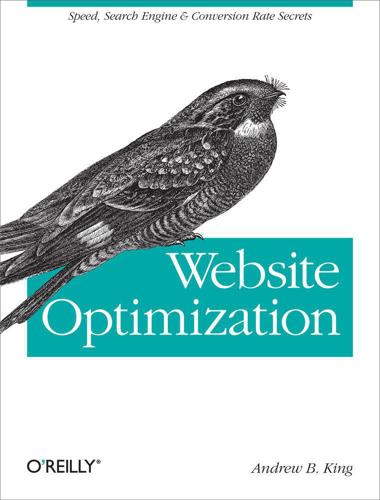
Networks, Crowds, and Markets: Reasoning About a Highly Connected World
by
David Easley
and
Jon Kleinberg
Published 15 Nov 2010
One of the most important results in auction theory is the fact we mentioned toward the end of the previous section: with independent, private values, bidding your true value is a dominant strategy in a second price sealed-bid auction. That is, the best choice of bid is exactly what the object is worth to you. Formulating the Second-Price Auction as a Game. To see why this is true, we set things up using the language of game theory, defining the auction in terms of players, strategies, and payoffs. The bidders will correspond to the players. Let vi be bidder i’s true value for the object. Bidder i’s strategy is an amount bi to bid as a function of her true value vi. In a second-price sealed-bid auction, the payoff to bidder i with value vi and bid bi is defined as follows.
…
Consider a second-price, sealed-bid auction with one seller who has one unit of the object which he values at s and two buyers 1, 2 who have values of v1 and v2 for the object. The values s, v1, v2 are all independent, private values. Suppose that both buyers know that the seller will submit his own sealed bid of s, but they do not know the value of s. Is it optimal for the buyers to bid truthfully; that is should they each bid their true value? Give an explanation for your answer. 6. In this question we will consider the effect of collusion between bidders in a second-price, sealed-bid auction. There is one seller who will sell one object using a second-price sealed-bid auction.
…
In our discussion of auctions, we found that if a seller with a single object runs a second-price sealed-bid auction — or equivalently an ascending-bid auction — then buyers bid their true values for the seller’s object. In that discussion, the buyers were choosing prices (via their bids) in a procedure selected by the seller. We could also consider a procurement auction in which the roles of buyers and sellers are reversed, with a single buyer interested in purchasing an object from one of several sellers. Here, our auction results imply that if the buyer runs a second-price sealed-bid auction (buying from the lowest bidder at the second-lowest price), or equivalently a descending-offer auction, then the sellers will offer to sell at their true costs.

The Inner Lives of Markets: How People Shape Them—And They Shape Us
by
Tim Sullivan
Published 6 Jun 2016
Vickrey’s classic auction study similarly began with a precise explanation of what was wrong with the standard first-price sealed-bid auction that was standard practice in procurement auctions for everything from highways to school supplies, the same mechanism that was used to sell Matsuzaka’s contract. By the time he was done, he’d unwittingly reinvented the stamp collectors’ auction of choice and laid the foundations for the field of auction design in the process. Vickrey described what he thought was a better way: the second-price sealed-bid auction, which is now known simply as a Vickrey auction. Then he proved mathematically that it just might be the best of all possible auctions that one could devise. He changed the auction industry from one that relied on an ad hoc choice of format to one built on design and optimization—a microcosm of economists’ larger role in society.
…
If it had turned out that the Yankees had bid $20 million instead of $30 million, you’re still no better off lowering your bid from the full $60 million the contract was worth to you. The amount you ultimately have to pay drops along with your competitor’s bid, not your own. This is what makes a second-price sealed-bid auction so special: it has the amazing property that, under a wide range of circumstances, the only task confronting a prospective bidder is figuring out how much she’d be willing to pay for whatever is on offer, writing that number on a piece of paper, and sending it in. John Henry doesn’t have to think about what Matsuzaka is worth to any team other than his own (or think about what they think he’s thinking); he just bids whatever he decides the player’s value is to the Red Sox.
…
This lack of use of the Vickrey auction was something of a puzzle to economists who were captivated by the way that, in its elegant simplicity, the mechanism helped magically cure the bidders’ headaches over strategizing and overpaying. It turned out that its simplicity wasn’t up to dealing with the messy complications of most real-life auction situations. The second-price sealed-bid approach represented the best of all possible auction designs under the conditions laid out in Vickrey’s 1961 paper, but its many shortcomings under more general conditions were laid bare in a 2006 essay by auction theorists Larry Ausubel and Paul Milgrom. In Ausubel and Milgrom’s words, despite its “theoretical virtues, [the Vickrey auction] also suffers from weaknesses that are often decisive.”13 For instance, there was no collusion in Vickrey’s model and no shill bidding from buyers using multiple identities—strategies familiar to government contractors since time immemorial.

The Armchair Economist: Economics and Everyday Life
by
Steven E. Landsburg
Published 1 May 2012
There is the Dutch auction, where an auctioneer calls out a very high price and successively lowers it until he receives an offer to buy. There is the first-price sealed bid auction, where each buyer submits a bid in an envelope, all are opened simultaneously, and the high bidder gets the item for the amount of his bid. There is the second-price sealed bid auction, where the high bidder gets the item but pays only the amount of the second-highest bid. There are third-, fourth-, and fifth-price sealed bid auctions. And there are more exotic possibilities. In the Glum Losers auction, the high bidder gets the item for free and everybody else pays the amount of his own bid.
…
The answer is yes if there happen to be two high bidders in the audience and no if Cursed Winners and Glum Losers 177 there happens to be just one. Because bidders are unlikely to reveal their bidding strategies in advance of the auction, the seller can never know for certain on any given night whether an English auction is preferable to, say, a Dutch auction. Even to decide between a first-price and a second-price sealed bid auction can be difficult for the seller. On the one hand, in a first-price auction he collects the high bid, while in a second-price auction he collects only the amount of the second-highest bid. On the other hand, bidders generally submit higher bids in a second-price auction. They submit even higher bids in a third-price auction.
…
Under certain reasonable assumptions (about which I will soon say more), and as a matter of mathematical fact, all of the auction rules I've mentioned yield the same revenue to the seller on average over many auctions. If I regularly sell merchandise at English auctions, while you sell at Dutch auctions, your brother sells at first-price sealed bid auctions, your sister sells at second-price sealed bid auctions, and your crazy Uncle Fester sells at Glum Losers auctions, and if we all sell merchandise of comparable quality, then in the long run we must all do equally well. This result applies as well to a vast number of other auction rules—in fact, to any rule you can imagine that does not involve some entrance fee to the auction hall or its equivalent.

Who Gets What — and Why: The New Economics of Matchmaking and Market Design
by
Alvin E. Roth
Published 1 Jun 2015
Sometimes items are sold instead in “sealed bid” auctions: each bidder submits a bid without hearing the other bids, the bids are all opened at the same time, and the highest bidder wins, sometimes paying the amount of his bid and sometimes paying the amount of the second- highest bid. Paying the second-highest bid may sound odd, until you notice that in an ascending bid auction, the winning bidder pays the price at which the second-highest bidder dropped out. So in both an ascending bid auction and a second-price sealed bid auction, the highest bidder gets the object at the price just beyond what the second-highest bidder was willing to pay. Both of those auction formats make it easy to decide how much to bid, if you know how much the object is worth to you. That’s because if you think of the winning bidder’s profit as what the object is worth to him minus what he has to pay for it (and each losing bidder’s profit as zero), it’s perfectly safe for bidders to bid the object’s full true value to them in a sealed bid auction, or to stay in an ascending bid auction until the auctioneer reaches the full amount they are willing to pay.
…
That’s because if you think of the winning bidder’s profit as what the object is worth to him minus what he has to pay for it (and each losing bidder’s profit as zero), it’s perfectly safe for bidders to bid the object’s full true value to them in a sealed bid auction, or to stay in an ascending bid auction until the auctioneer reaches the full amount they are willing to pay. Win or lose, a bidder can’t make a higher profit by bidding something else. That isn’t obvious at all, but if you think about it carefully, you’ll see why it’s true. Consider the second-price sealed bid auction, in which the high bidder receives the object and pays the second-highest bid, while the other bidders pay nothing and receive nothing. By bidding less than the object’s true value, a bidder sometimes turns a profitable winning bid into a losing one, and by bidding more than the true value, he sometimes turns a losing bid into an unprofitable winning bid at which he pays more than the object was worth to him.

Website Optimization
by
Andrew B. King
Published 15 Mar 2008
These pages need to have information relevant to the incoming keywords and clear calls to action to motivate the visitor to act to fulfill the goal of the campaign. Bids are often called maximum costs per click (or maximum CPCs). The bid you submit for a keyword is the most you will pay to get traffic. PPC programs use a type of auction that is like a second-price sealed bidding system with private values. These types of auctions are difficult to bid successfully because you usually have incomplete information. The Pay-per-Click Work Cycle The rhythm of work on PPC is cyclical, but the amount of effort spent on each part of the cycle changes over the duration of the work.
…
Testing ads is not easy; testing landing pages is even more challenging. Keep in mind that landing page experiments usually take more time. Sometimes, though, if you get lucky, you will find a little change that makes a significant impact on conversion rates. Optimizing Bids PPC programs use an auction that is like a second-price sealed bidding system with private values. This means you do not know how much your competitors are bidding. Everyone has different bids for each keyword. Typically, people overbid in second-price auctions with private values. The larger the number of competing bidders and the more uncertain the value of what is being bid on, the more extreme the overbidding gets.

The Undercover Economist: Exposing Why the Rich Are Rich, the Poor Are Poor, and Why You Can Never Buy a Decent Used Car
by
Tim Harford
Published 15 Mar 2006
The auctions were held without making sure that there was any interest from bidders, without minimum prices, and using a theoretical curiosity called a “Vickrey auction,” which led to considerable embarrassment. (The auction was named after its inventor, Nobel laureate William Vickrey, who made major early advances in applying game theory to auctions.) The Vickrey auction is a second-price sealed-bid auction. The “sealed bid” means that each bidder writes down a single bid and seals it in an envelope. When the envelopes are opened, the highest bidder wins. “Second-price” is the curious rule that the winner pays not his bid but that of the second-highest bidder. The elegant reasoning behind this auction is that no bidder ever has an incentive to shave his bid in an effort to make more profit; making a lower bid affects his chance of winning but not the price.

Understanding Sponsored Search: Core Elements of Keyword Advertising
by
Jim Jansen
Published 25 Jul 2011
However, if the auction is in equilibrium, there is no winner’s curse because the bidders account for this effect in their own bids and adjust accordingly. Therefore, each bid represents the true valuation of the resources by the buyer. The pure Vickrey auction deals with auctions where a single good is being sold (i.e., a second-price sealed-bid auction). When multiple identical resources are for sale, things get more complex, and one can apply the same payment principal (i.e., have all winning bidders pay the amount of the highest nonwinning bid). This is known as a uniform price auction. Unfortunately, this situation does not result in bidders bidding their true valuations in most situations, and the auction does not reach stability.